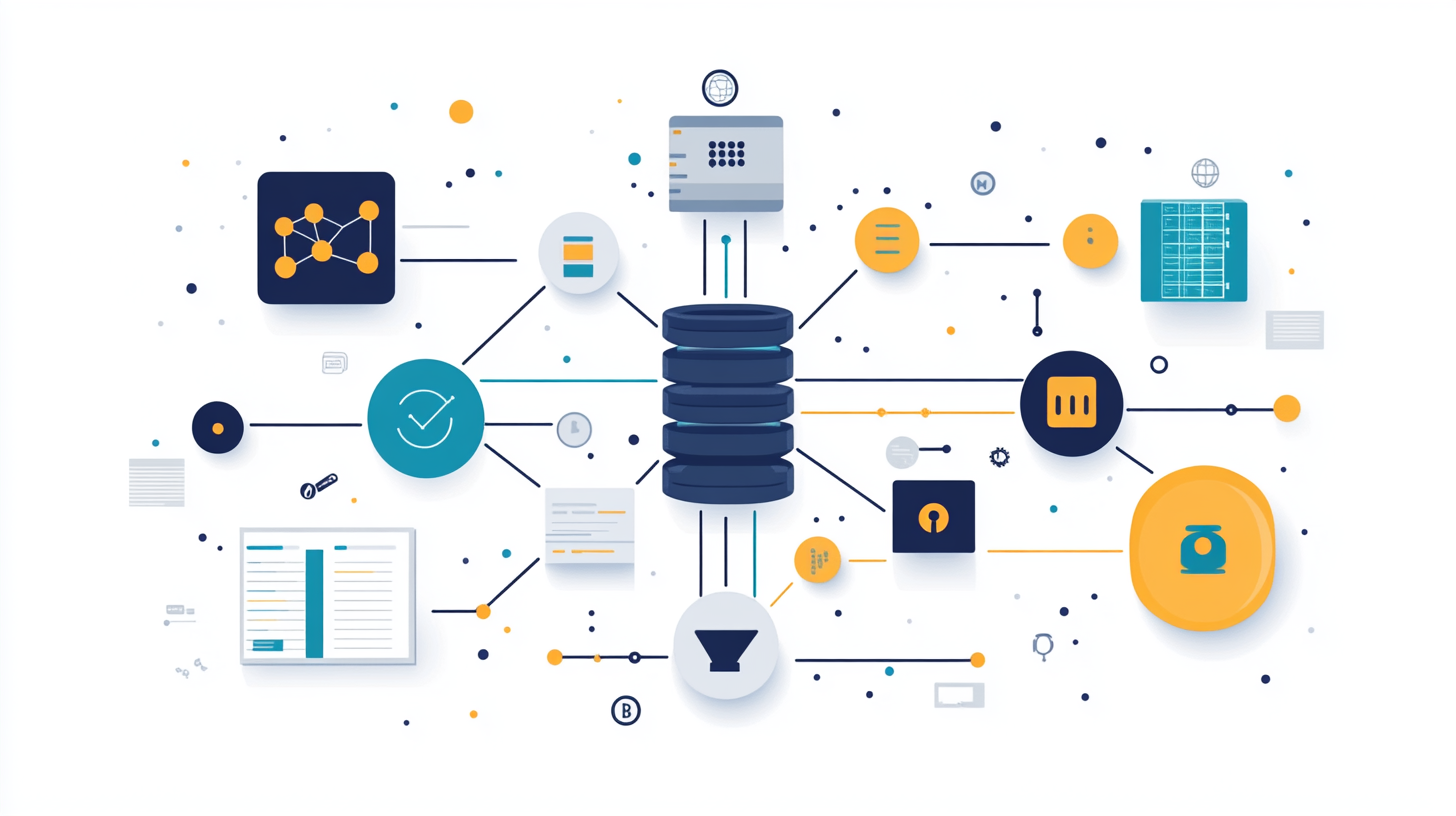Quantum Computing and the Future of Human Progress: Revolutionizing Physics, Medicine, and Everyday Technology
Quantum computing is transforming science and medicine—enabling breakthroughs in materials, diagnostics, drug discovery, and AI. From curing diseases to powering smarter tech, it’s reshaping what’s possible across industries and in our everyday lives. The future is quantum—and it’s arriving fast.
The Foundation of Quantum Computing
To understand the transformative power of quantum computing, one must first grasp the principles that make it fundamentally different from classical computing. While traditional computers manipulate binary bits—each representing either a 0 or a 1—quantum computers operate with qubits. These qubits can exist in multiple states simultaneously, thanks to the phenomena of superposition and entanglement, which are at the heart of quantum mechanics.
Qubits, Superposition, and Entanglement
A qubit, short for quantum bit, is the basic unit of information in a quantum computer. Unlike classical bits, a qubit can represent both 0 and 1 at the same time—a property known as superposition. This allows quantum computers to process a vast number of possibilities in parallel. For example, where a classical computer might evaluate inputs sequentially, a quantum computer can consider a superposition of all possible inputs simultaneously.
But superposition alone isn’t what gives quantum computing its full power. The true magic happens when qubits become entangled—a quantum phenomenon where the state of one qubit becomes correlated with the state of another, no matter how far apart they are. When entangled, changing the state of one qubit instantly influences its partner, allowing quantum computers to perform operations with an intricate web of interdependent values. This ability to maintain and manipulate correlated quantum states enables highly parallelized computation and is critical for algorithms like Shor’s (for factoring large numbers) or Grover’s (for unstructured search), which offer exponential speedups over their classical counterparts.
Quantum vs. Classical: A Paradigm Shift
In classical computing, increasing processing power generally means increasing the number of transistors or speeding up clock cycles. But there are physical limits to how small and fast traditional silicon-based hardware can become. Quantum computing bypasses these limits by using the principles of quantum mechanics themselves as computational resources.
One striking difference is how information is represented and manipulated. While classical algorithms operate deterministically (producing the same output for the same input), quantum algorithms often produce probabilistic outcomes that must be sampled multiple times to find the most likely answer. While this may sound less precise, it actually reflects how many natural processes—like molecular interactions or genetic mutations—behave in the real world. Quantum computers excel at modeling such stochastic, high-dimensional systems.
Current Quantum Hardware Architectures
As of 2025, several competing approaches are being pursued to build scalable, fault-tolerant quantum computers. Each has strengths and trade-offs in terms of fidelity, coherence time, and scalability.
- Superconducting Qubits: This approach, championed by companies like IBM, Google, and Rigetti, uses superconducting circuits cooled to near absolute zero. These circuits behave like artificial atoms and can be precisely manipulated using microwave pulses. They offer relatively fast gate speeds and have shown promising progress in mid-scale quantum processors (e.g., IBM’s Eagle and Condor chips). However, they are sensitive to noise and require advanced error correction to scale.
- Trapped Ions: Used by IonQ, Honeywell (Quantinuum), and various academic groups, this method traps individual ions in electromagnetic fields and uses lasers to manipulate them. Trapped ions offer exceptionally high fidelity and long coherence times, though gate speeds tend to be slower and scaling remains complex.
- Photonic Quantum Computing: Companies like PsiQuantum and Xanadu are betting on light—using photons to encode and process quantum information. Photonics offer natural advantages in scalability and ambient operation (i.e., they don’t require extreme cooling), but implementing reliable two-qubit gates and error correction remains a hurdle.
- Neutral Atoms and Topological Qubits: Other experimental platforms include manipulating neutral atoms with optical tweezers (e.g., QuEra) or exploring more exotic approaches like topological qubits, which aim for intrinsic error resistance by encoding information in the geometry of the quantum system (pursued by Microsoft).
While no single hardware model has yet achieved full quantum advantage across real-world problems, these platforms are rapidly evolving. Significant milestones in quantum volume, error rates, and algorithmic performance are now reported regularly, and hybrid quantum-classical systems are emerging as near-term solutions.
Quantum Advantage vs. Practical Utility
The field distinguishes between two milestones: quantum advantage (the point where a quantum computer performs a task no classical machine can replicate) and quantum utility (where the output is not only unreplicable but also useful in solving real-world problems). Google claimed quantum advantage in 2019, but many in the field now focus on reaching quantum utility for specific domains—especially those involving optimization, simulation, and machine learning.
As hardware stabilizes and quantum error correction matures, the push is shifting from demonstration to application. And the implications for scientific modeling, particularly in physics, biology, and chemistry, are enormous.
New Frontiers in Physics & Materials Science
At its core, quantum computing is a tool built from the very laws it seeks to explore. That unique alignment makes it a powerful instrument for pushing the frontiers of physics and material discovery—domains that have long been hindered by the limitations of classical simulation. Whether the challenge is modeling high-temperature superconductors, designing next-generation batteries, or understanding exotic states of matter, quantum computing is beginning to reveal pathways that were previously inaccessible to traditional computation.
Quantum Simulation: A Natural Fit
One of the most promising and foundational use cases for quantum computing is quantum simulation—using qubits to model the behavior of quantum systems. Classical computers struggle to simulate molecules with more than a few atoms due to the exponential growth in computational requirements. For instance, modeling the electron interactions in a moderately complex molecule could require more classical bits than atoms in the universe.
Quantum computers, by contrast, natively model these interactions. As Nobel Laureate Richard Feynman noted in 1982, “Nature isn’t classical… and if you want to make a simulation of nature, you’d better make it quantum mechanical.”
Quantum simulation is already demonstrating early utility in materials science. Researchers from Google Quantum AI, in collaboration with physicists at Columbia University, used a quantum computer to simulate the ground state energy of a simple chemical system with record accuracy (Arute et al., Nature, 2020). More recently, IBM’s Qiskit team and researchers at University of Tokyo simulated the electronic structure of lithium hydride—an important step toward modeling battery materials.
Advancing Superconductors and Exotic Materials
Superconductivity, the phenomenon where materials conduct electricity without resistance, has long fascinated physicists. However, understanding high-temperature superconductors remains one of the great unsolved problems in condensed matter physics. Classical methods fail to capture the subtle quantum phase transitions and correlation effects that define these materials.
Quantum simulation is now being used to explore these interactions in unprecedented detail. Work at institutions like MIT, ETH Zurich, and Lawrence Berkeley National Lab is harnessing quantum computers to model the behavior of cuprates and other unconventional superconductors. Success here could revolutionize energy transmission, enabling lossless power grids, maglev transportation, and more efficient quantum hardware itself.
Additionally, quantum computers are helping identify topological materials—exotic phases of matter that exhibit robustness against decoherence and may serve as building blocks for future quantum devices. These materials defy classical intuition and are best explored through quantum-native models.
Applications in Clean Energy
The search for sustainable and efficient energy solutions is another area where quantum computing may have far-reaching impact. Quantum simulations can help identify and optimize catalysts for green hydrogen production, simulate complex chemical reactions for carbon capture and storage, and improve the design of next-generation solar cells with better energy conversion efficiency.
For instance, Volkswagen and D-Wave have partnered on quantum simulations aimed at improving lithium-ion battery chemistry—a key enabler for electric vehicles. Similarly, ExxonMobil and IBM are exploring quantum algorithms for optimizing energy extraction and refining processes, reducing environmental footprints.
Nanotechnology and Quantum Sensors
Quantum mechanics governs the nanoscale, and quantum computing offers new tools for designing nanomaterials with precision. Simulating quantum dots, surface interactions, and nanoscale defects can lead to advances in electronics, photonics, and quantum sensing devices.
Quantum sensors—devices that use quantum phenomena like entanglement or tunneling to achieve ultra-sensitive detection—are already seeing applications in navigation, gravitational wave detection, and medical imaging. Improved modeling and optimization via quantum computers could yield even more sensitive instruments for research and industry.
Bridging Theory and Engineering
The convergence of theory and hardware is key. Quantum computers don't just model exotic physics; they also accelerate material engineering by predicting properties like conductivity, magnetism, and thermal stability before any material is synthesized in the lab. This “in silico materials discovery” model has the potential to reduce development cycles from years to months.
The U.S. Department of Energy’s Quantum Science Center, the European Quantum Flagship, and Japan’s Q-LEAP program are funding efforts to develop quantum-enhanced platforms for discovering energy-efficient materials, superconductors, and novel alloys. Startups like Zapata Computing, Classiq, and Seeqc are also contributing software platforms that help translate quantum chemistry problems into efficient circuits tailored for near-term quantum hardware.
From better batteries to lossless power grids and nanoscale precision tools, quantum computing is opening a new chapter in material innovation. And yet, some of its most transformative potential lies beyond materials—in the intricacies of life itself.
Quantum Computing in Medicine: Longevity & Disease Cure
The human body is a mosaic of interacting biological systems—cells, proteins, genes, and signaling networks—all governed by quantum-level interactions. Understanding and modeling this complexity is essential to treating diseases and extending healthy lifespan. Yet classical computing, for all its strengths, has consistently fallen short when trying to decode biology at this scale. Quantum computing, with its ability to model complex molecular systems and explore vast biological datasets in parallel, offers a new lens through which to study the deepest questions of life and health.
Modeling the Biology of Aging
Aging is not a singular process but a convergence of genetic, epigenetic, proteomic, and metabolic decline. It's governed by feedback-rich systems that evolve over time, responding to environmental cues, DNA damage, and cellular stress. Many of these systems—like mitochondrial dynamics, protein misfolding, or the role of telomerase—are quantum in nature and deeply resistant to classical analysis.
Quantum computing introduces the ability to simulate aging-related pathways at atomic and subatomic resolution. For example, researchers at Harvard Medical School, in collaboration with QC Ware, are using quantum algorithms to model protein aggregation patterns associated with Alzheimer’s and Parkinson’s disease—both of which involve misfolded proteins and mitochondrial dysfunction. These simulations help identify early-stage pathological transitions and may reveal intervention points years before symptoms arise.
Quantum simulations also enable a deeper understanding of senescence—the process by which cells lose their ability to divide and begin releasing inflammatory signals. By modeling the quantum mechanics of gene expression regulation, researchers hope to uncover how senescence is triggered and how it might be reversed or delayed.
Institutions like the Buck Institute for Research on Aging and Altos Labs are exploring how quantum-enhanced modeling can accelerate progress toward therapies that extend both lifespan and healthspan. The SENS Research Foundation, a leading advocate for regenerative medicine, views quantum computing as a critical tool for modeling complex repair strategies targeting age-related cellular damage.
Predictive Modeling for Chronic and Degenerative Diseases
Many chronic diseases—diabetes, cardiovascular disease, autoimmune disorders—result from multifactorial interactions at the molecular level. Predicting how these diseases emerge and progress requires modeling thousands of variables simultaneously: genetic predispositions, environmental exposures, metabolic states, and immune responses.
Quantum machine learning (QML) offers a leap in this capability. Unlike classical ML models, which often struggle with the high-dimensional data and noise typical in biomedical research, QML algorithms operate in a quantum Hilbert space, enabling more nuanced pattern recognition.
In 2023, MIT’s Jameel Clinic and IBM Quantum published early findings on using quantum-enhanced neural networks to model cardiovascular disease progression. The QML approach outperformed classical models in identifying at-risk patients from incomplete clinical datasets—an important step toward early intervention.
Similarly, the National Institutes of Health (NIH) is exploring quantum approaches for modeling autoimmune flare-ups in lupus and rheumatoid arthritis, where stochastic immune signals often escape linear prediction models.
Simulating Molecular and Genetic Systems
Biological systems are made up of molecules whose behaviors are governed by the laws of quantum mechanics. Quantum computing can simulate these molecules with an accuracy classical computers simply cannot match.
One key application is in gene-protein interaction modeling. For example, researchers can simulate how a particular single nucleotide polymorphism (SNP) alters protein folding or changes the binding affinity of a therapeutic molecule. Quantum simulations are being tested at the EMBL-European Bioinformatics Institute to map genomic variants associated with longevity, using data from large cohorts such as the UK Biobank and All of Us Research Program.
Another area of interest is CRISPR gene editing. Quantum algorithms are being developed to model off-target effects with greater precision, improving both the safety and efficacy of gene-editing therapies. These simulations go beyond sequence alignment, incorporating energy states, 3D structures, and real-time dynamics.
Biomarker Discovery and Early Diagnosis
The early detection of disease often depends on identifying subtle biological signals—circulating proteins, epigenetic markers, or transcriptomic shifts—that precede symptoms. These markers are buried in complex, noisy datasets that often defy classical statistical tools.
Quantum-enhanced data analytics are being deployed for biomarker discovery in oncology and neurodegeneration. In partnership with AstraZeneca, the quantum software firm Cambridge Quantum (now part of Quantinuum) has demonstrated how quantum natural language processing (QNLP) models can mine unstructured biomedical literature and omics data to surface non-obvious biomarker candidates for pancreatic and ovarian cancer.
Meanwhile, Stanford University School of Medicine is piloting the use of QML for combining imaging data with liquid biopsy results, aiming to detect cancers and degenerative diseases earlier and with higher specificity than current methods allow.
Toward Personalized, Preventive, and Precision Medicine
The holy grail of medicine is precision: delivering the right treatment to the right patient at the right time. Quantum computing accelerates this vision by making it feasible to model an individual’s entire biological “digital twin”—a data-driven simulation of their unique biology, environment, and risk profile.
Such a twin could predict responses to drugs, flag emerging risks, and simulate intervention strategies in silico. Companies like H1 Insights, Deep Genomics, and Protai are beginning to explore how quantum acceleration could be integrated into their AI-driven precision medicine platforms.
Imagine a future in which your genome, metabolome, and microbiome are used to simulate your health trajectory—and quantum-enhanced algorithms continually refine your risk assessment and preventive strategy. That future is no longer speculative—it’s being actively built.
Quantum computing’s role in medicine is not just computational; it’s deeply human. It offers a way to intervene earlier, personalize treatment more effectively, and perhaps even alter the arc of human aging itself.
Pharmaceutical Breakthroughs: Quantum-Driven Drug Discovery and Development
The pharmaceutical industry has long been defined by high costs, long timelines, and high failure rates. On average, it takes 10–15 years and over $2 billion to bring a new drug to market, with more than 90% of candidates failing somewhere between preclinical trials and FDA approval. Much of this inefficiency stems from the sheer complexity of biological systems and the trial-and-error nature of current drug discovery methods.
Quantum computing offers a way to dramatically accelerate and de-risk this process by simulating molecular interactions with atomic precision, predicting drug efficacy, and enabling more efficient screening and optimization. Rather than test millions of molecules blindly, researchers can now prioritize the most promising candidates using quantum-enhanced tools—saving years of work and reducing reliance on expensive wet-lab experimentation.
Simulating Molecular Interactions at Quantum Scale
A molecule’s behavior—its shape, polarity, binding affinity, and reactivity—depends on how electrons move around its atomic nuclei. These interactions are inherently quantum mechanical, yet classical computers must approximate them using computationally intensive methods like density functional theory (DFT) or molecular dynamics (MD), which scale poorly with molecular size.
Quantum computers, in contrast, can directly simulate the electronic structure of molecules by representing the quantum state of each electron and orbital. This allows researchers to accurately calculate properties like binding energy, reaction pathways, and transition states that determine whether a molecule will behave as a viable therapeutic agent.
For example, Roche and Cambridge Quantum have partnered to explore quantum algorithms for simulating protein-ligand binding—a critical step in early-stage drug discovery. In one pilot, they used variational quantum eigensolvers (VQE) to model the binding affinity of small molecules to enzyme targets relevant in cancer and metabolic disease.
Similarly, BASF and Zapata Computing have demonstrated quantum simulations of catalysts and active compounds used in industrial and pharmaceutical chemistry, enabling more efficient reaction pathways and environmentally friendly synthesis methods.
Reducing Trial-and-Error in Drug Candidate Screening
Traditional screening libraries contain millions of compounds, but only a small fraction have desirable pharmacokinetic properties. Quantum machine learning can rapidly narrow this search space by identifying features correlated with successful outcomes—particularly when trained on experimental data and quantum-accurate simulations.
In 2024, Boehringer Ingelheim and Google Quantum AI published joint research using quantum algorithms to analyze molecular scaffolds for central nervous system drugs. By combining quantum kernels with classical ML models, they improved hit rates in virtual screening by 35% compared to standard methods.
Moreover, quantum computing enables inverse design—working backward from a desired biological outcome to identify or synthesize the molecular structures most likely to produce it. This is particularly valuable in targeting protein-protein interactions, which are notoriously difficult to modulate but critical in diseases like cancer, HIV, and autoimmune disorders.
Tackling Complex and Rare Diseases
Some diseases—particularly neurodegenerative disorders like Alzheimer’s and ALS, or rare genetic diseases with few therapeutic options—resist conventional drug development because of incomplete understanding of underlying mechanisms. Quantum simulations can bridge this gap.
For instance, Moderna and Rigetti Computing are exploring the use of quantum computing to model RNA structures and optimize mRNA therapeutics. This is crucial for diseases where traditional small molecules are ineffective and gene-based therapies represent a promising frontier.
In oncology, AstraZeneca has invested in quantum machine learning for identifying biomarkers and resistance mechanisms in tumors with heterogeneous gene expression. These insights help tailor targeted therapies and immunotherapies to tumor-specific pathways—moving us closer to personalized oncology.
Strategic Collaborations: Pharma Meets Quantum
The pharmaceutical industry has taken note. Nearly every major pharma company now has a dedicated quantum initiative or partnership. These collaborations include:
- Pfizer & QC Ware: Developing quantum ML pipelines for drug target prediction.
- GlaxoSmithKline (GSK) & Microsoft Azure Quantum: Modeling ligand-protein interactions using hybrid quantum-classical solvers.
- Astellas Pharma & Menten AI: Designing novel peptides with quantum-enhanced generative models.
- Merck KGaA & Seeqc: Exploring superconducting-based quantum processors for pharma simulations.
Public-private partnerships are also advancing the field. The Pistoia Alliance, an R&D collaboration platform, has launched quantum readiness task forces to align standards and benchmark quantum approaches in pharmaceutical R&D.
A New Drug Discovery Pipeline
With quantum computing integrated into the pharmaceutical workflow, the future drug pipeline may look radically different:
- Target Identification: QML scans genomics and proteomics data to flag novel disease targets.
- Molecular Design: Quantum simulations predict optimal molecular scaffolds and synthesis routes.
- Virtual Screening: Quantum-enhanced ML prioritizes high-potential candidates from vast compound libraries.
- Preclinical Testing: In silico trials on “digital twins” forecast toxicity and efficacy before lab experiments begin.
- Clinical Optimization: Quantum models analyze patient subtypes and guide personalized dosing strategies.
This transformation isn’t hypothetical—it’s already underway. As quantum hardware matures and software platforms improve usability, pharma will become one of the earliest and most impactful adopters of quantum computing at scale.
Quantum computing is accelerating the pace and precision of pharmaceutical innovation. It promises faster cures, safer therapies, and real breakthroughs for conditions that have long resisted traditional approaches.
Empowering Consumer Technology: The Quantum Edge in Everyday Life
Though still in its early stages, quantum computing is already impacting areas of technology that consumers rely on every day. From personalized recommendations and real-time logistics to cybersecurity and smart assistants, quantum technologies are working behind the scenes to make digital experiences faster, smarter, and more secure.
As quantum-classical hybrid systems become more practical, and as algorithms mature, we can expect quantum computing to underpin a new generation of consumer-facing applications—many of which will be indistinguishable from “magic” to the average user.
Quantum-Enhanced AI for Smarter Applications
At the intersection of quantum computing and artificial intelligence lies Quantum Machine Learning (QML)—a field focused on enhancing traditional AI models using quantum circuits. QML offers several advantages for consumer applications, particularly in recommendation systems, natural language processing, and computer vision.
For example, quantum kernels—used to map data into high-dimensional quantum spaces—can improve classification and clustering tasks. This is especially useful in personalized content delivery, such as optimizing streaming service recommendations or tailoring e-commerce product suggestions. Early-stage research from Zapata Computing and Amazon Braket has shown how QML could reduce the number of training samples needed, improving both speed and performance.
Voice assistants like Siri, Alexa, and Google Assistant may eventually tap into QML to better understand context and intent, particularly in low-resource environments or multilingual settings. Quantum-enhanced language models (e.g., QNLP) developed by Quantinuum are already exploring sentence encoding methods that outperform classical approaches on specific NLP tasks.
Optimization at Consumer Scale
Many daily services rely on optimization: ride-sharing routes, delivery logistics, airline scheduling, and supply chains. These are complex combinatorial problems, where classical solvers quickly hit computational walls as variables increase.
Quantum algorithms, particularly quantum annealing and variational quantum optimization, offer breakthroughs here. D-Wave and Volkswagen, for instance, have demonstrated quantum optimization for traffic flow in major cities like Beijing and Barcelona. As quantum optimization becomes more scalable, consumers will experience benefits like:
- Faster, more reliable delivery windows.
- Reduced travel delays.
- Lower carbon emissions from route optimization.
Smart home systems and IoT platforms will also benefit. For example, quantum-accelerated optimization could help manage energy loads across homes and grids, dynamically adjusting heating, lighting, and appliance usage in real-time to save energy and reduce costs.
Search, Semantics, and Recommendation Engines
Quantum computing could eventually revolutionize how search engines rank and retrieve information. Instead of relying solely on classical graph traversal or keyword indexing, quantum search algorithms (like Grover’s algorithm) offer quadratic speedups in unstructured search problems.
This means faster, more accurate search results, particularly when dealing with complex queries, ambiguous language, or massive knowledge graphs. Quantum-enhanced semantic search may become critical as knowledge bases grow into exabyte-scale, supporting next-gen personal assistants and AI copilots.
Quantum-Secure Encryption: Protecting Data in the Post-Quantum Era
One of the most pressing reasons quantum computing matters to consumers is security. Quantum computers are expected to break widely used public-key cryptosystems like RSA and ECC, which protect everything from online banking to personal messaging.
To prepare, the field of post-quantum cryptography (PQC) is racing to deploy encryption schemes that can withstand quantum attacks. The National Institute of Standards and Technology (NIST) has already selected several PQC algorithms for standardization, including CRYSTALS-Kyber and Dilithium, which will gradually replace current standards over the next decade.
In parallel, quantum key distribution (QKD)—which uses the principles of quantum mechanics to enable provably secure communication—is being piloted by telecom companies like BT, China Telecom, and SK Telecom. Consumers may not see these shifts directly, but they’ll enjoy more secure cloud storage, communications, and financial transactions as a result.
Smart Environments and the Quantum Edge
As the number of connected devices explodes, so too does the demand for real-time processing at the edge. Quantum computing, paired with edge AI, could provide smarter decision-making in environments like:
- Autonomous vehicles: Real-time path planning and coordination with traffic systems.
- Smart cities: Dynamic public transport routing and adaptive infrastructure.
- Wearable health devices: Predictive alerts for heart irregularities or metabolic imbalances based on continuous quantum-enhanced pattern analysis.
In these contexts, hybrid quantum-classical systems will likely dominate—using classical CPUs for routine tasks and routing complex decisions through cloud-accessible quantum accelerators.
Consumer-Facing Companies Enter the Quantum Race
Major tech platforms are already exploring how to embed quantum capabilities into their offerings:
- Google is developing QML APIs within TensorFlow Quantum and working toward integrating quantum services into Google Cloud.
- Amazon Web Services (AWS) provides access to quantum hardware via Amazon Braket, enabling developers to prototype and deploy hybrid applications.
- Microsoft Azure Quantum supports a full development environment for both quantum simulation and real-time deployment of optimization tasks.
Startups are also entering the fold. Companies like Multiverse Computing and Classiq are building quantum apps tailored for finance, manufacturing, and retail—some of which will find their way into enterprise software suites used by consumer-facing businesses.
In sum, quantum computing’s influence on consumer tech may be subtle at first—more efficient apps, smarter recommendations, stronger encryption—but over time, it will underpin a smarter, faster, and more secure digital ecosystem.
Technical Challenges and Development Timeline: From Promise to Practicality
Quantum computing stands on the cusp of revolutionizing multiple industries—but today, the field is still navigating fundamental obstacles. Despite landmark achievements in algorithm development, early-stage applications, and hardware scale, quantum systems are not yet robust or scalable enough to deliver widespread, consistent value across most domains.
Understanding these limitations is crucial—not to diminish the technology’s potential, but to ground expectations and better guide innovation, investment, and workforce development.
The Fragility of Qubits: Decoherence and Noise
At the heart of the problem lies a paradox: qubits are powerful because they exist in delicate quantum states—but that very delicacy makes them unstable. Decoherence, the process by which a qubit loses its quantum behavior due to interactions with its environment, occurs on the order of microseconds to milliseconds, depending on the hardware platform.
Quantum gates—operations that manipulate qubit states—must therefore be completed quickly and with high fidelity before decoherence sets in. However, today’s devices suffer from:
- Gate errors: Inaccurate operations due to imperfect control.
- Readout errors: Noise during measurement of qubit states.
- Crosstalk: Interference between nearby qubits.
These errors accumulate rapidly, making it difficult to run long, complex computations. For instance, while today’s quantum processors from IBM, Google, and IonQ offer between 50 and 1000 physical qubits, the number of usable logical qubits—error-corrected and reliable—remains in the single digits or, in most cases, zero.
Quantum Error Correction: A Long Road Ahead
To overcome these limitations, researchers are developing quantum error correction (QEC)—techniques that encode a logical qubit into many physical qubits to detect and correct errors in real time. The most well-known method, the surface code, requires thousands of physical qubits to produce a single fault-tolerant logical qubit.
Estimates suggest that practical applications—like large-scale drug simulations or cryptography-breaking—will require millions of physical qubits, tightly synchronized and operating at extremely low error rates (<0.1%). Today, even the best hardware still operates orders of magnitude above this threshold.
Breakthroughs in QEC will likely arrive gradually over the next 5–10 years, with intermediate milestones such as:
- NISQ optimization: Using noisy intermediate-scale quantum (NISQ) machines for approximate solutions.
- Mid-circuit measurement and feedback: A key step toward real-time error tracking.
- Hardware-aware quantum compilers: Making better use of limited, imperfect hardware.
Scalability and Infrastructure Limitations
Quantum hardware requires extreme environments—cryogenic cooling, vacuum chambers, laser arrays, or specialized photonic circuits. Scaling such infrastructure economically and reliably is a nontrivial task. A few specific challenges include:
- Thermal management: Superconducting qubits require dilution refrigerators operating at ~15 millikelvin.
- Manufacturing uniformity: Each additional qubit introduces more variability and risk of decoherence.
- Interconnects: Scaling quantum processors may require new methods for qubit connectivity across chips and modules (quantum interconnects or modular quantum architectures).
Companies like PsiQuantum are attempting to sidestep these issues by building room-temperature photonic systems, while others like QuEra and Atom Computing use neutral atoms for scalable architectures. Still, mainstream hardware that supports thousands of error-corrected qubits remains several years away.
Software Bottlenecks and Usability
Even as hardware matures, quantum software must evolve. Today’s programming frameworks—Qiskit (IBM), Cirq (Google), PennyLane (Xanadu), and Braket SDK (AWS)—are powerful but require domain knowledge in quantum mechanics, linear algebra, and gate decomposition.
For quantum computing to become accessible beyond specialists, the field needs:
- Higher-level abstraction tools (like Classiq or Horizon Quantum).
- Quantum-native ML and optimization libraries.
- Domain-specific frameworks for pharma, finance, and materials science.
These tools will help non-quantum experts—clinicians, chemists, materials scientists—leverage quantum capabilities without mastering quantum theory.
Talent Gaps and Interdisciplinary Training
Quantum computing is inherently interdisciplinary, requiring expertise across physics, electrical engineering, computer science, mathematics, and domain-specific knowledge (e.g., genomics or pharmacology). The field faces an acute talent shortage, especially in quantum algorithm design, hardware engineering, and systems integration.
According to the Quantum Economic Development Consortium (QED-C) and NSF, demand for quantum talent will triple by 2030. Universities are responding by launching dedicated quantum engineering programs (e.g., at MIT, University of Waterloo, and TU Delft), but more investment is needed in vocational training, industry partnerships, and cross-disciplinary mentorship.
Timeline to Impact: When Will We Feel It?
The timeline for widespread impact varies by domain:
- Near-term (2025–2027): Continued hybrid applications in optimization, chemistry, and machine learning using NISQ devices. Early wins in materials science and pharma R&D.
- Mid-term (2028–2032): Emergence of fault-tolerant systems with dozens of logical qubits. Real-world deployment in personalized medicine, logistics, and quantum-secure communications.
- Long-term (2033 and beyond): Scalable, general-purpose quantum computers capable of revolutionizing entire industries—climate modeling, national security, drug design, and AGI (artificial general intelligence) acceleration.
Governments are already preparing for this timeline. The U.S. National Quantum Initiative Act, EU Quantum Flagship, and China’s Quantum Internet Plan collectively represent billions of dollars in funding over the next decade, aimed at building the full-stack infrastructure necessary for quantum advantage.
Quantum computing is not an overnight revolution—it’s a long-term transformation. But the groundwork being laid today will determine whether we realize its full potential in time to solve some of humanity’s most urgent challenges.
Conclusion: Quantum Computing and the Future of Human Progress
Quantum computing is more than a scientific breakthrough—it’s a new lens for understanding complexity itself. Across disciplines as varied as particle physics, drug development, climate science, and personal health, the systems we seek to understand are inherently quantum mechanical. For the first time in history, we are building machines that compute not in spite of that complexity, but because of it.
This article has explored how quantum computing is emerging as a catalyst for discovery and innovation across four high-impact domains:
- In physics and materials science, quantum simulators are helping uncover new superconductors, clean energy materials, and nanoscale devices that could power future computing infrastructure.
- In medicine, quantum models offer unprecedented insight into aging pathways, chronic disease progression, and genetic interactions—paving the way for earlier diagnoses, better treatments, and the possibility of personalized longevity.
- In pharmaceuticals, quantum algorithms are slashing time and cost in drug discovery, enabling simulations of molecular systems too complex for classical methods, and bringing hope to the search for cures to rare and treatment-resistant diseases.
- In consumer technology, quantum-enhanced AI, optimization, and encryption are quietly reshaping how we experience daily life—through smarter apps, safer communications, and more efficient services.
But this is just the beginning.
Quantum computing still faces significant challenges: error-prone hardware, the need for fault-tolerant architectures, limited programming abstractions, and a critical talent gap. Despite these hurdles, the field is advancing rapidly—propelled by global research initiatives, cross-sector collaborations, and breakthroughs in both hardware and hybrid quantum-classical algorithms.
What lies ahead is not simply faster computers, but deeper answers to questions we’ve long struggled to answer: How do proteins misfold and cause neurodegeneration? What triggers cellular aging, and how might it be reversed? Can we design medicines or materials without needing to physically test every possibility?
To unlock these answers, the quantum ecosystem must remain as interdisciplinary as the problems it aims to solve. That means more collaboration between physicists and biologists, engineers and clinicians, computer scientists and chemists. It means integrating quantum systems into real-world environments where they can augment—not replace—existing tools. And it means fostering a generation of scientists, developers, and decision-makers who understand both the technology and its implications.
The future of quantum computing is not decades away. It’s unfolding now—in the form of early use cases, hybrid applications, and quantum-inspired models that are already making a difference. As we move forward, the measure of success won’t be qubit counts or speed benchmarks alone—it will be the lives extended, the diseases cured, the materials discovered, and the insights gained from a world finally computable at its most fundamental level.














Discussion